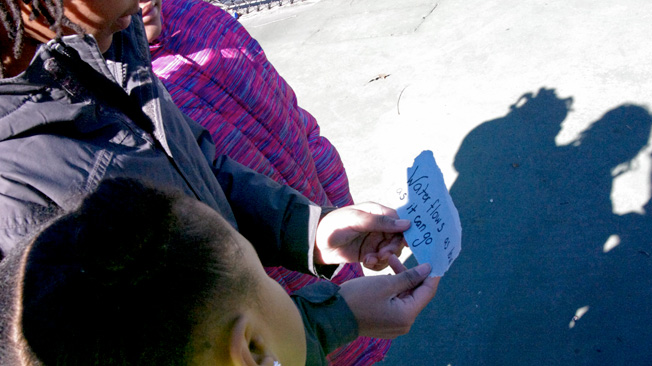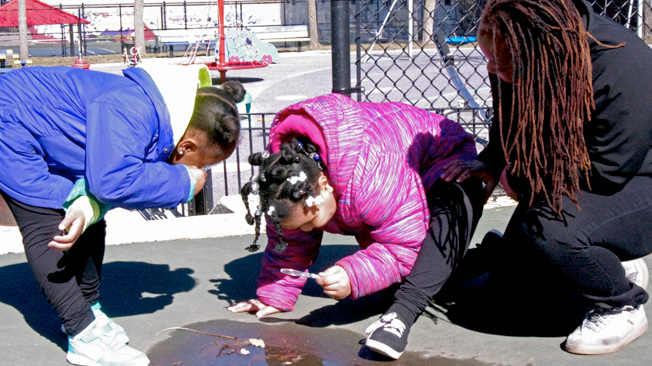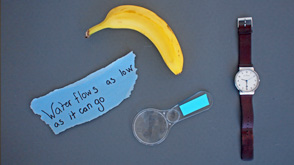Mission: Water!
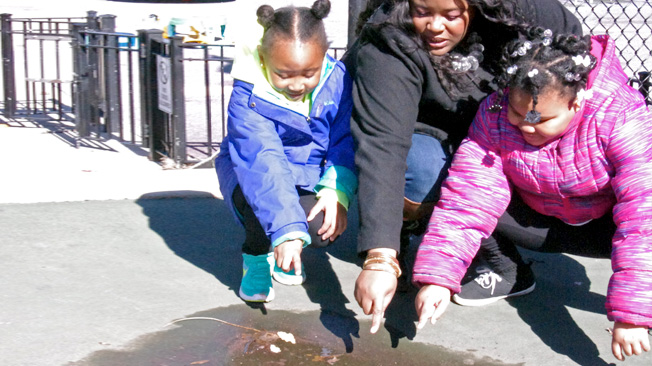
What Is This Activity?
Where do animals in a city or town find fresh drinking water after days of no rain? You and your child pretend to be thirsty squirrels, searching a dry neighborhood for water.
Introduction
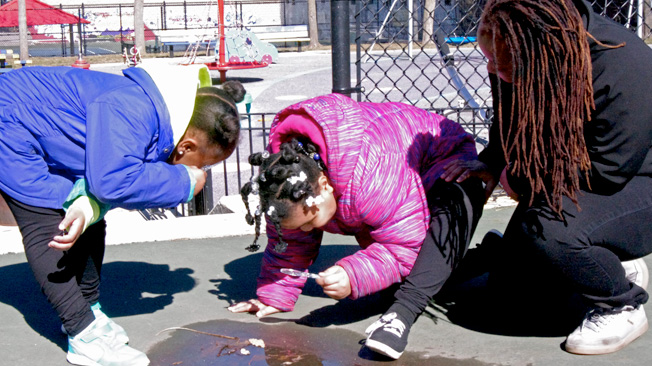
Big Science Ideas
- Animals need water to survive.
Go Outside 45 minutes
- Watch the short "Squirrel for a Day" video on the PLUM LANDING website, in which Brad follows a thirsty city squirrel that finds water in surprising places. Then play the video of "When Animals Are Thirsty" water song.
- Immediately after the song ends, announce, with drama: "Mission Water begins … NOW!" Explain the quest: As very, very thirsty squirrels, we have 10 [or 15] minutes to find as many sources of water as we can. Start the timer!
- Make a show of grabbing a piece of fruit and then go outside. Hand your child the secret clue to read together. Wonder aloud: What does that mean?
- Let your child decide where to look for water in your neighborhood. Guiding questions:
- Where are puddles most likely to form? (Low spots, hard surfaces, etc.)
- Should we look in the shade or sun? (The sun's heat dries up puddles quickly.)
- Is there any water that's not in a puddle? (Ask this again after the mission.)
- What about ice or snow? How could animals drink it? (They can lick it or bite into it, and it melts into water.)
- Count the water sources (with excitement!) as your child finds them. Announce the time left after each success. Hurry!
- When 10 [or 15] minutes is up, congratulate your child and review the water sources. Ask: What does "Water flows as low as it can go" mean? (Water flows downhill until it can't. Puddles form in low spots.) Where else could a thirsty animal find water? (Birdbaths, fountains, gardens, etc.)
- For older or more mature children: Ask: Where do you get water? (Faucet, reservoir, etc.)
- The piece of fruit is a clue. Can your child figure it out? (Animals, including people, get some of their water from the food they eat—fruits, nuts, leaves, and other plant parts and meat.) Count the fruit as one more water source!
- Revisit a puddle or other standing water and encourage your child to explore it. Ask: How clear is it? What's floating in it? (Leaves, green or yellow pollen, algae, dirt, a shiny film of oil, etc.) What does it smell like? Any animals such as larvae (baby insects)—very tiny, worm-like critters that squirm? Use a magnifying lens if you have one.
- For older children: Have them create a time-lapse photo series by taking a picture of the puddle from the same angle and distance over the course of a morning or afternoon, hour to hour.
Explore Some More
Speedy Waters
If there's a stream, river, canal, or other moving water nearby, explore it with your child: How clear is the water compared to the puddles? How fast is the water flowing? Toss in a leaf and watch how quickly it moves downstream. Does the water slow down anywhere? Compare the wide and narrow parts, and flatter parts with sloped ones.
Outdoor Family Fun with Plum App
This app gets families outdoors exploring the world. Every day, the app offers five outdoor missions to get everyone thinking and talking about nature and the science that's all around us.

